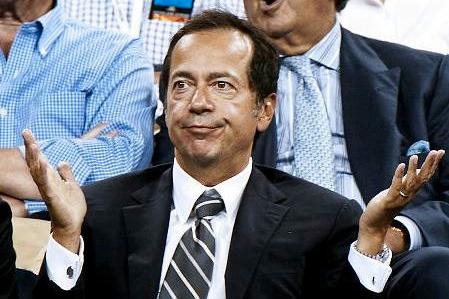What Hedge Fund Managers Really Do All Day
Published: Sep 21, 2015

Today, there are more than 8,900 hedge fund firms in the world. Many firms have fewer than five employees, and even the largest firms typically have only between 200 and 1,000 employees. Bridgewater Associates, for example, has the most assets under management of any hedge fund, but it only employs 1,500 people. J.P. Morgan Asset Management, ranked second in assets under management, employs less than 1,000 investment professionals. As a result, landing a job at a hedge fund can be difficult. However, if you do have what it takes to work at a hedge fund, below is what your life could look like once you climb the hedge fund ladder. What follows is a day in the life of a principal and portfolio manager at a major, midsized hedge fund.
6:00 a.m.: I wake up, quickly check email (no pending issues), and hit the treadmill.
6:45 a.m.: After a quick shower and breakfast, I head to the car and say good morning to my driver. One of the perks of my company is use of a driver. It’s a great perk because I can get a lot of work done on the way via telephone and email.
8:40 a.m.: I arrive at work and have driver of the Mercedes town car drop me off in front of the office, while he parks the car in the garage in the basement of the office building.
8:45 a.m.: I get into the office and ask the secretary for messages and a rundown of meetings and appointments for the day. I skim through The Wall Street Journal and Financial Times and look for the latest news on the stocks in the portfolio. Then I scan the sectors the fund invests in. There’s no alarming news.
9.00 a.m.: I stop by the research analyst desks to discuss any breaking news for the portfolio and then head over to talk to the head trader on what happened in after-hours trading yesterday and how the stocks fared. We discuss the trading plan for the day and advise covering as much of the ABC short position as possible, even if the stock is not liquid in the market.
9:30 a.m.: I look over the printout from the accounting group on the security level performance in the portfolio. Evaluate trends, and see if any stock lost more than 1 percent. Have the research team investigate these further.
9:45 a.m.: I attend the scheduled meeting with two senior individuals in the risk management group who want to pitch in buying the latest risk software for $30,000. We discuss the pros and cons of the software, and I take notes and determine what added value this software will have to the firm. I let the risk staff know that I will get back to them with a decision after conducting some more research. Risk management also gives a briefing during the daily morning research meeting—a brief overview of all upcoming conferences, meetings, and so on, and gives a general guidance of the stocks to focus for the day.
11:00 a.m.: Online, I research all of the risk software available in the market, the pros and cons of each program, and their prices. I have a friend at another firm who knows a lot about risk management software, so I call him for his opinion about the proposed software.
11:15 a.m.: I participate in a conference call with legal counsel on recent Securities and Exchange Commission changes on shorting stocks and get their opinion on how this may impact the firm.
12:00 p.m.: Lunch with an investor in town from London. He just wants to touch base on how things are going on at the fund. We discuss differences in regulation between Europe and the United States.
2:00 p.m.: I come back from lunch and check on how the portfolio is doing relative to the market and then speak with the head of trading and get a recap of the trading day so far.
3:00 p.m.: Meet with the investor relations department to check the status of the presentation being prepared for tomorrow’s important meeting with a large institutional investor (a public pension fund) who is considering investing a large sum of money into the fund. I request a draft and review it for any changes.
4:00 p.m.: Market close. I check news for any aftermarket close news releases.
4:30 p.m.: Get the intra-day profit and loss statement to see how the fund performed for the day and wrap up loose ends at the office.
5:30 p.m.: I head out with some colleagues for dinner and cocktails. This is a great way to get to know each other outside work and build team spirit. Of course, I pick up the drinks and dinner with the company card—which makes everyone happy.
8:00 p.m.: I call the driver to take me home. On the way, I catch up on a few emails and answer a voice mail or two. It’s smooth sailing and I get home quickly.
10:00 p.m.: I have an early start tomorrow, so I head to bed.
The above was adapted from the new Vault Career Guide to Hedge Funds.
Follow us on Twitter.
Read More:
5 Guesstimates Wall Street Firms Ask and How to Answer Them
6 Finance Interview Questions That Test Your Market Knowledge
9 Interview Questions Hedge Funds Ask (and How to Answer Them)
